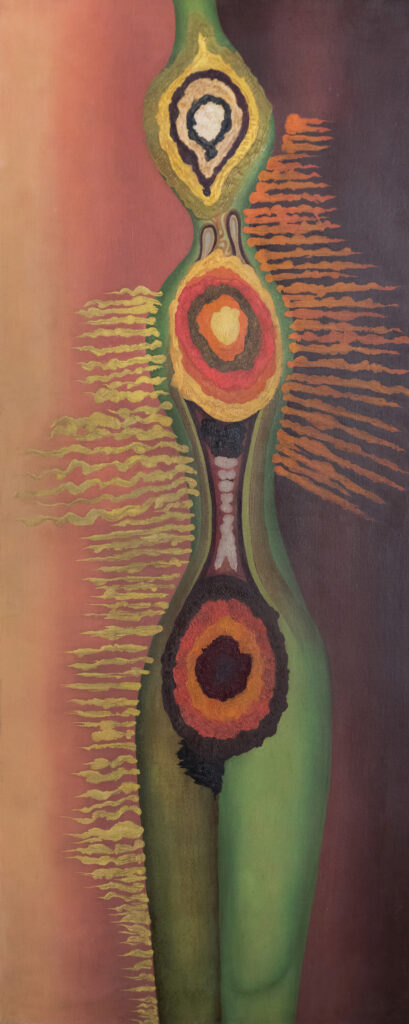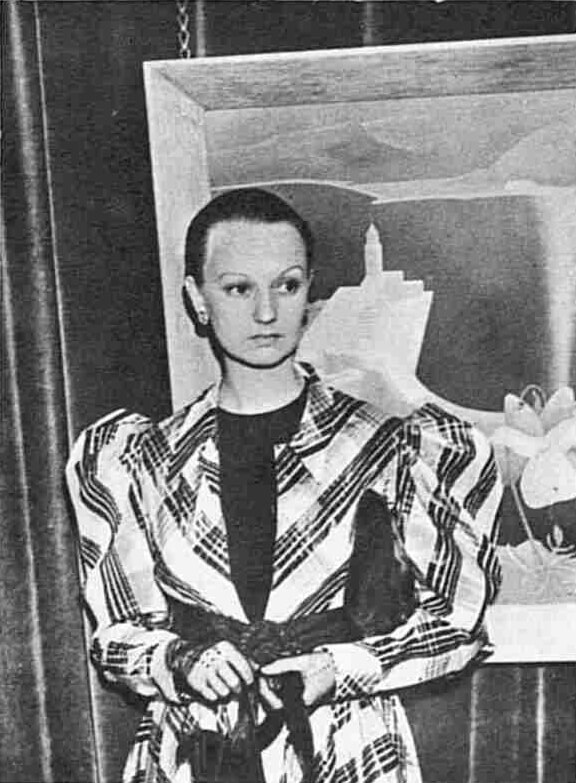Your currently viewing RAW Modern | Switch to RAW Contemporary
Autumnal Equinox, 1949
Ithell Colquhoun was an artist and writer whose works were heavily influenced by surrealism and her various spiritual beliefs. This painting shows clear evidence of both. Its large size indicates the origin of the image: the pattern perceived by her in the artificial wood graining of a painted door. As she wrote: ”a huge figure seemed to walk straight out of the door and advance towards me.” It is an example of surrealist automatism: using an image found, but not made, by the artist as her inspiration. She then developed the image by means of conventional brushwork. For the surrealists, such images came from the artist’s personal unconscious, but Colquhoun believed that because contact with spirits and elementals was possible, they often came from other realms. The sets of concentric circles relate to the chakras, the Tantric power centres of the subtle body, although their number and distribution are personal and not conventional. Colquhoun was not in favour of trying to understand a painting by rational analysis: viewers should enjoy it for what they see – an imposing female figure drawn from Colquhoun’s subconscious or the spirit world and whose presence commands both attention and respect.

